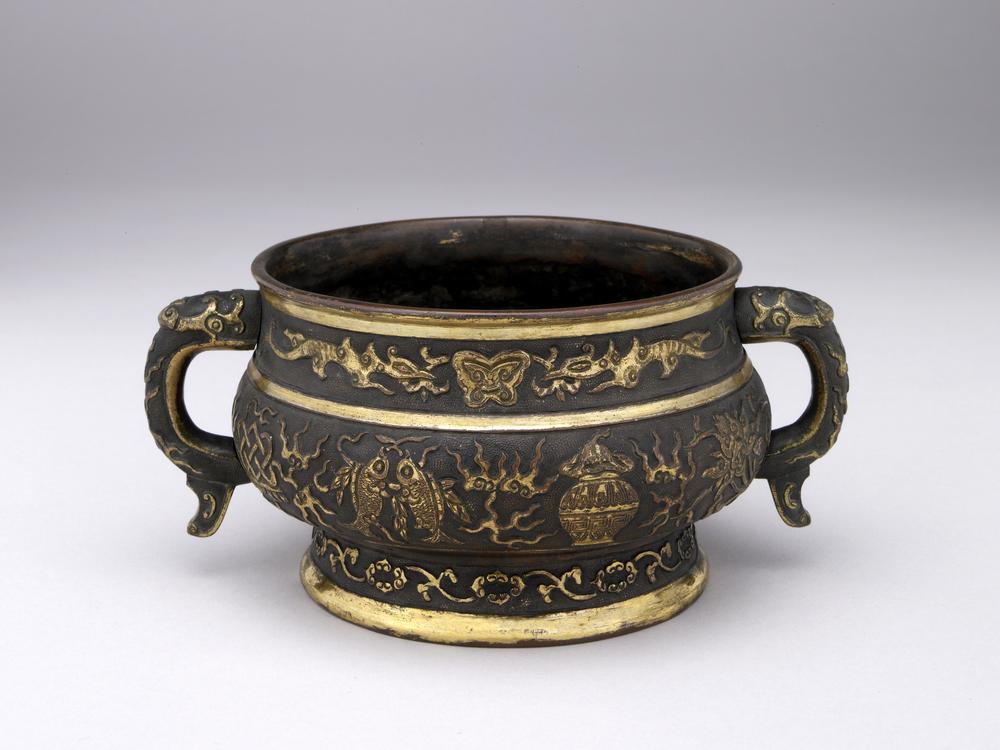“The Tomb of Ning”, written in ink on a whole paper and mounted on a vertical axis, was written on the Tomb of Ning in the early Qing Dynasty. This painting is 116cm long and 74cm horizontal. The tablet has a round head and a pierced head, with the inscription “The Stele of the Zhengyi Doctor in Qinjiang County, Ningyue County” in four lines and 12 characters arranged around the tablet. Stele Yang regular script has 30 lines and 39 characters. The monument was erected in April of the fifth year of the Sui Daye reign (609)
In 1832, Xu Naiji discovered this monument in Qixingping, Qinzhou, Guangdong Province. Lingnan ancient inscriptions are rare, and this tablet was promoted as the “crown of Guangdong tablets” at that time. It not only has a high historical value, but also has a distinctive calligraphy style. The characters are vertical and long, with a thick lingering charm. Many critics believe that it is similar to Ouyang Xun’s style. Yang Shoujing, Kang Youwei, Luo Zhenyu, and others are all well known. The original stone is now stored in the Guangdong Provincial Museum
When this tablet was first discovered, there was a missing piece in the lower left corner, resulting in a loss of over 10 characters. In the first year of Xuantong in the Qing Dynasty (1909), a remnant stone (with 5 characters still on it) was found and combined with the original tablet. It was moved to the Zun Jing Pavilion of the State School. Zheng Rong, the governor of Qinzhou, wrote an inscription in official script and inscribed it on the left of the last line of the tablet. Looking at this expansion, there is no Zheng Ba in the lower left corner. In addition, the left half of the word “Li” in the second line “Wei Cheng Ge Li” is not damaged, the right half of the word “taboo” in the third line “taboo” is not damaged, and the “three” in the eighth line “Yi Tong San Si” is intact. It can be defined as the initial development of Daoguang. The seal on it bears seals such as “Xiaoyu”, “Collection Records of Wang Xiaoyu”, and “Yizhai Treasure Seal”
The main bibliographies of this tablet include: Mo Youzhi’s “Jin Shi Bi Zhi” in the Qing Dynasty, Lu Yaoxiang’s “Jin Shi Continuation”, Lu Zengxiang’s “Ba Qiong Shi Jin Shi Supplement”, Wang Yun’s “Twelve Yan Zhai Jin Shi Guo Yan Lu”, Xu Shujun’s “Bao Ya Zhai Inscription and Postscript” in modern times, Fang Ruo’s “School Stele Essays”, and Zhang Yansheng’s “Good Book Stele Calligraphy” in modern times.
![图片[1]-The Stele of the Tomb of the Sui Dynasty in the Early Qing Dynasty-China Archive](https://chinaarchive.net/Warring States period/Inscription/9707.jpg)
© Copyright
The copyright of the article belongs to the author, please keep the original link for reprinting.
THE END





